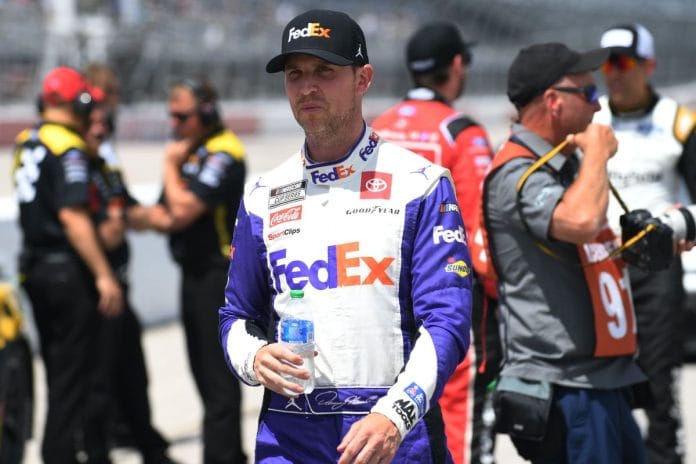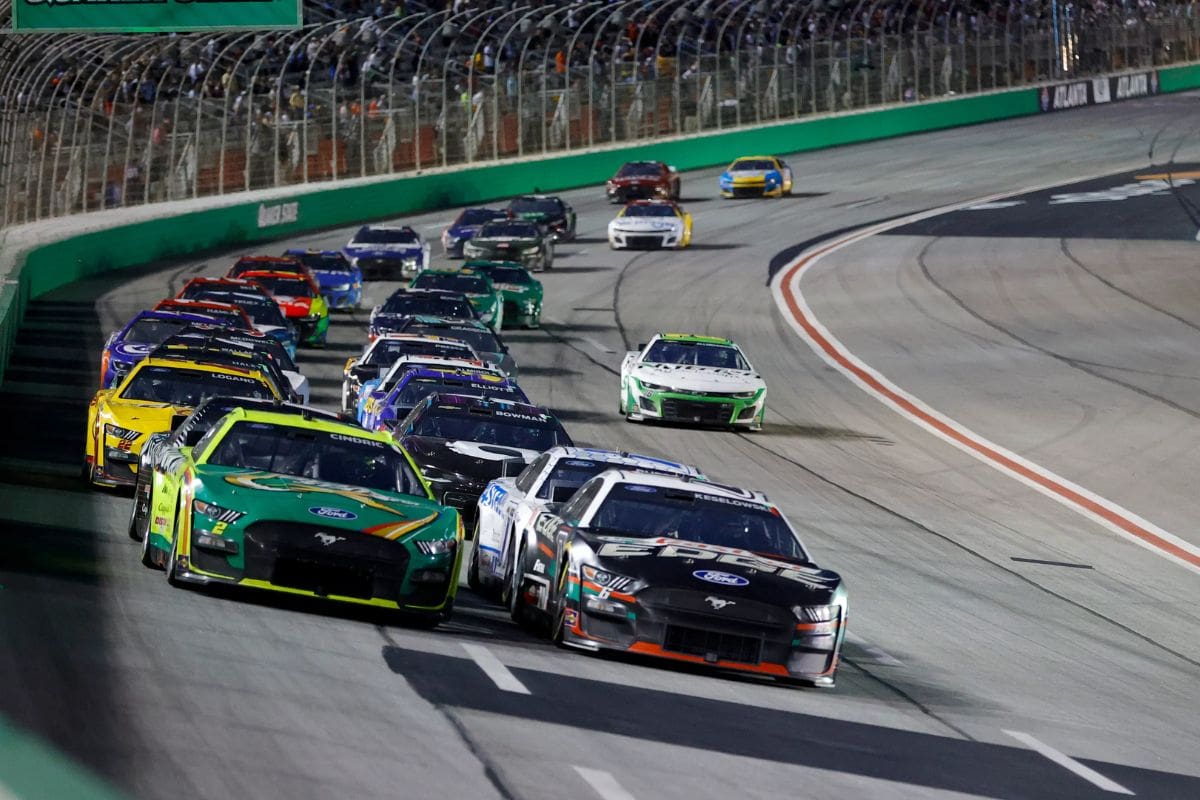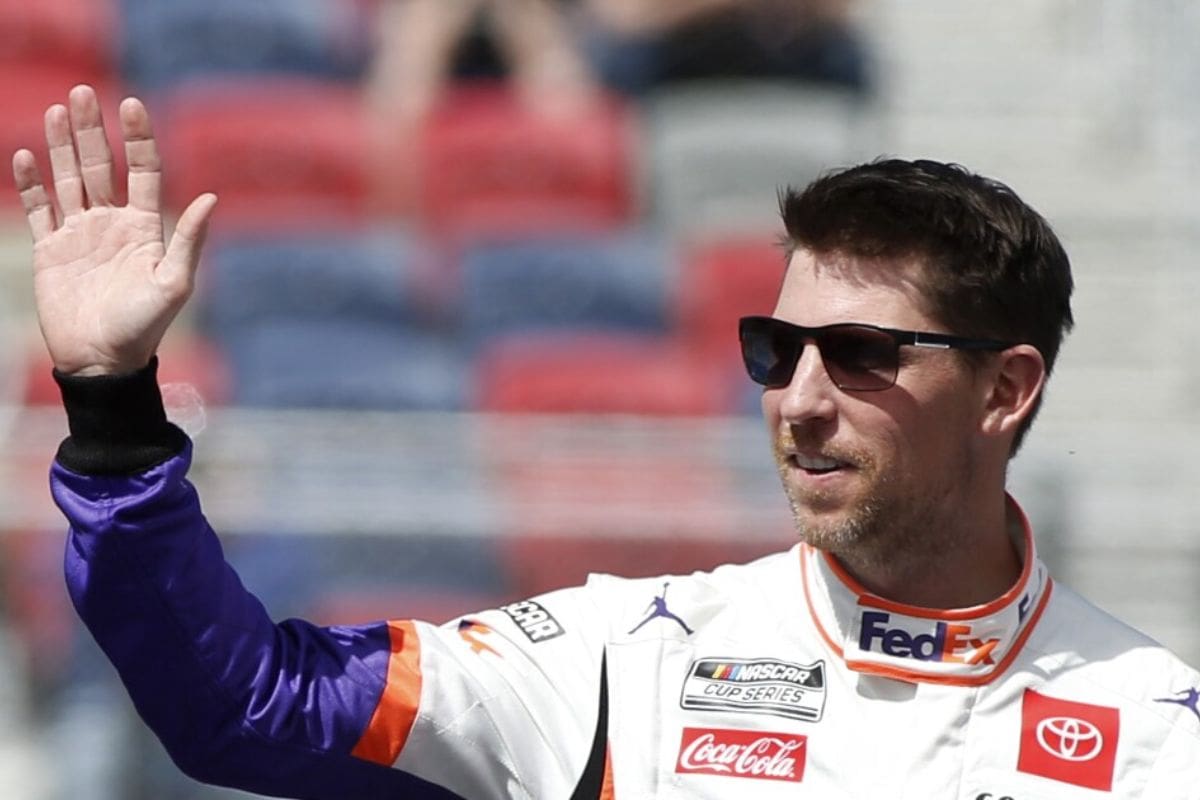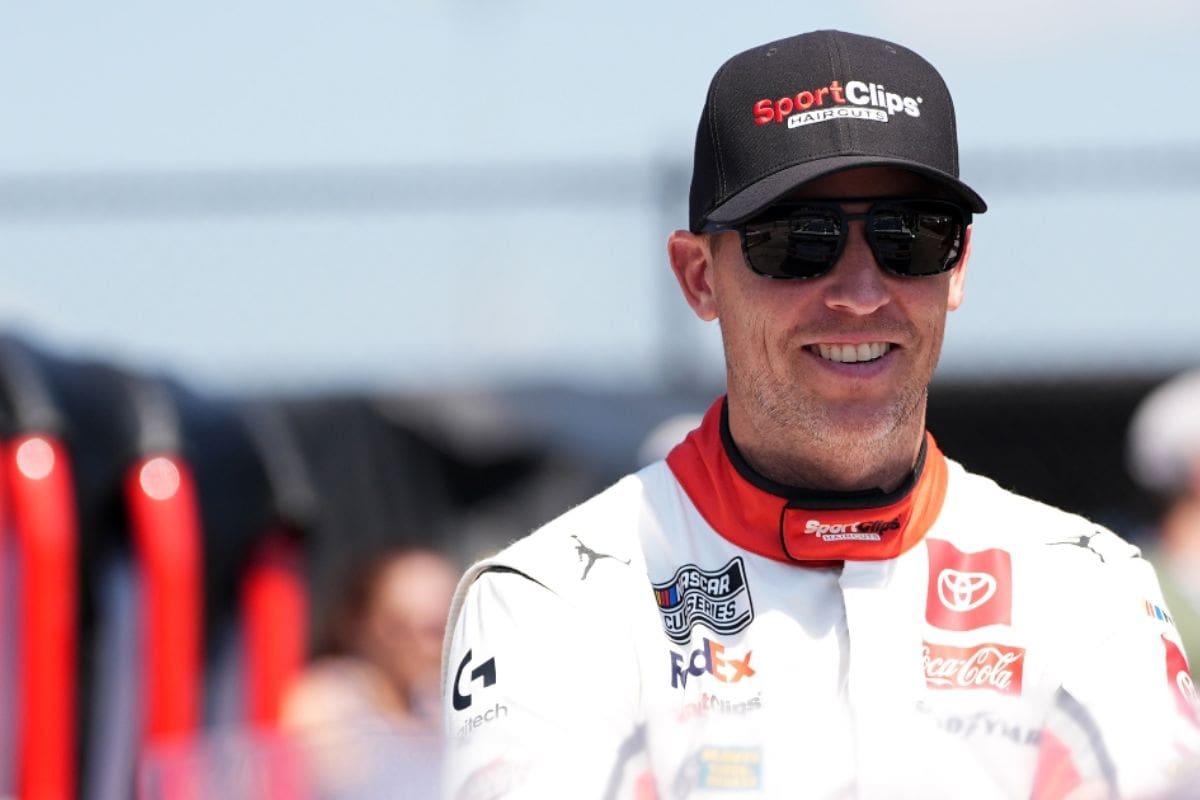Denny Hamlin Calls Out Cup Stars: Denny Hamlin‘s recent critique of Cup Series drivers at the Atlanta race spotlights a vital dynamic in competitive racing: the balance between aggression and caution under playoff strain. He attributes the lack of chaotic incidents to a pervasive “timidness,” revealing how mental factors can shape race outcomes. This raises pertinent questions about the implications of such behavior on driver strategy, track dynamics, and ultimately, the championship picture. If fear of failure overrides the instinct to compete fiercely, what does this mean for the future of NASCAR?
Key Highlights
- Denny Hamlin criticized NASCAR Cup drivers for their cautious driving, attributing it to ‘timidness’ during playoff racing at Atlanta.
- The playoff opener’s tension led to a subdued aggression, impacting competitive dynamics and resulting in fewer chaotic incidents.
- Hamlin noted that mechanical issues contributed to drivers’ hesitance, affecting their confidence and decision-making on the track.
- The psychological stakes of the playoffs heightened the pressure on drivers, leading them to manage aggression more carefully than usual.
- Understanding track characteristics is essential, as drivers’ behavior often varies significantly between aggressive short tracks and strategic superspeedways.
The Nervousness of the Playoff Opener
The atmosphere surrounding the playoff opener at Atlanta Motor Speedway was charged with an unmistakable tension, a palpable nervousness that gripped every Cup driver. The conclusion of a grueling 26-race regular season had led to a crucial moment where only 16 competitors remained in the race for the championship. This selective process inevitably amplifies the stakes, as drivers are acutely aware that a single misstep could jeopardize their aspirations.
In environment, the instinct for self-preservation often overshadows the aggressive driving tactics typically observed throughout the season. The palpable apprehension manifested in cautious movements, as drivers tactically avoided unnecessary collisions. Such behavior reflects not only an acute awareness of the gravity of the playoff stage but also a fundamental shift in competitive dynamics.
The collective anxiety was not merely a product of the playoff implications; it also stemmed from the intricate mechanics of the vehicles themselves, with mechanical issues looming as a considerable concern. The interplay between driver confidence and vehicle reliability remains critical, as any malfunction could render even the most skilled driver vulnerable.
As the playoffs progress, it will be crucial for drivers to reconcile their instinctual caution with the need for aggressive performance, ensuring they remain competitive without falling victim to the pressures of the moment.
Denny Hamlin on the Atlanta Race
Denny Hamlin’s reflections on the chaotic Atlanta race highlight the complexities of competitive racing dynamics, particularly during the playoffs. The Quaker State 400 presented a unique scenario where traditional elements of NASCAR’s fender-banging culture appeared subdued.
Historically, chaos on the track is often fueled by heightened emotions and aggressive driving, particularly at short tracks. However, in Atlanta, a series of mechanical issues overshadowed driver tempers, leading Hamlin to conclude that nervousness was not the primary driver of the chaotic incidents.
Chase Elliott’s performance exemplified the unpredictable nature of the race. While he held his ground among his Hendrick Motorsports teammates, a sudden car handling issue during a pit stop led to a collision with Austin Cindric. This unforeseen mechanical failure not only compromised Elliott’s race but also resonated throughout the final laps.
As Joey Logano approached what seemed to be a certain victory, further complications arose when Elliott collided with Ross Chastain, triggering a chain reaction that involved Hamlin himself.
Hamlin’s analysis suggests that the incidents in Atlanta were the result of external factors rather than driver timidity. The interplay of mechanical failures and tactical missteps created a perfect storm of chaos on the track.
As competitors navigate the intricacies of the playoffs, the Atlanta race serves as a reminder that unpredictability is an inherent aspect of NASCAR, influenced by both human and mechanical elements. This complexity will continue to shape the competitive landscape as drivers aim for mastery against the backdrop of evolving dynamics.
Hamlin’s Analysis of the Atlanta Issues
Analyzing the complexities of the Atlanta race, Hamlin identified several key factors contributing to the chaotic events on the track. His insights emphasized the interplay between track conditions, driver behavior, and competitive dynamics, providing a multifaceted perspective on the unfolding drama.
Hamlin pointed out that the diminished grip and handling issues prompted drivers to prioritize car control over aggressive racing. This cautious approach, while seemingly timid, was rooted in the necessity to manage unpredictable vehicle behavior.
“There were a couple of factors – one of them being that the track had lost grip. And everyone’s car wasn’t handling quite as good as it was…The leaders’ pace was about 6-8/10ths off of what it was in the spring.”
“I think that the reason we didn’t have these massive pile-ups really is that you had to keep distance between you and the car in front of you or behind you because your car was just out of control.” – hamiln
Furthermore, the playoff landscape introduced a unique dynamic; while some drivers were vying for championship points, others, with nothing at stake, were enthusiastic to capitalize on opportunities.
“Because I always feel like, if anything, the Fall races are always wilder. You got 16…well 4 of those 16 have already blown the cut. They’re gonna be aggressive. Then you’ve got 20 others who have nothing to lose. They’re not part of the playoffs, they’re just trying to win…So I don’t really think it’s timidness from a playoff driver perspective.” – hamiln
Hamlin’s analysis suggests that while avoidance of chaos is often attributed to timidity, the reality is far more intricate, involving tactical choices driven by tangible track conditions and competitive motivations. This complex understanding of racing dynamics invites a deeper examination of driver psychology and track interaction.
The Nature of NASCAR Tracks
NASCAR tracks are a diverse landscape that plays a critical role in shaping race strategies and driver performance. The evolution of these tracks from mainly short circuits to a mix of superspeedways and intermediate tracks has fundamentally altered the nature of competition within the series.
Initially, NASCAR thrived on short tracks like Bristol and Martinsville, where drivers engaged in close-quarters racing, fender-banging, and a culture that often culminated in post-race confrontations. Such environments fostered an aggressive driving style conducive to physical altercations, as evidenced by the recent Kyle Busch-Ricky Stenhouse Jr. incident at North Wilkesboro Speedway.
In clear contrast, superspeedways present a unique set of challenges. The draft-driven pack racing creates a different dynamic, where drivers are less likely to engage in physical confrontations due to the unpredictable nature of high-speed drafting and the potential for catastrophic crashes. This environment necessitates a more tactical approach, as drivers must balance aggression with risk management to navigate the tight packs safely.
Moreover, the track surface, banking, and length influence tire wear, fuel strategy, and pit stop timing, which are paramount to success.
Hamlin’s Comparison of Track Types
The contrasting dynamics between short tracks and superspeedways have sparked considerable discussion among drivers, particularly emphasized by Hamlin’s recent remarks. He pointed out the behavioral dichotomy that emerges in these two distinct racing environments.
While superspeedways are notorious for a higher frequency of wrecks, drivers often exhibit a level of acceptance regarding incidents; the nature of speedway racing fosters a sense of inevitability. As Hamlin noted, this acceptance diminishes the emotional intensity associated with on-track confrontations.
“There’s more wrecks on superspeedways than there are on short tracks. But why are there fistfights at the short tracks? Because it’s just accepted more on superspeedways, like oh, that person hit that one. Ah, it’s just speedway racing. On short tracks it’s like, no you had control of your sh-t, and you ran all right into me – that calls for fighting.” – hamlin
In noticeable contrast, short tracks evoke a different response. Here, drivers are perceived to possess greater control over their vehicles, leading to a heightened sense of accountability when collisions occur. This perception fuels the intensity of competition, often culminating in physical altercations.
Hamlin’s assertion that “you ran all right into me” triggers a more visceral reaction highlights the psychological stakes involved in short track racing. The expectation of control amplifies frustrations, making confrontations more likely.
As the 2024 playoffs commenced with the Atlanta race, the absence of considerable wrecks amidst chaotic moments in the race exemplified this phenomenon. Drivers navigated a precarious balance, carefully managing their aggression rather than succumbing to it.
News in Brief: Denny Hamlin Calls Out Cup Stars
The cautious approach exhibited by Cup drivers during the Atlanta race reflects the psychological complexities inherent in playoff dynamics. Denny Hamlin’s observations reveal how the interplay between aggressive racing and risk aversion influences competitive behavior. The avoidance of chaos, while beneficial in maintaining order, may hinder opportunities for tactical advancement. This phenomenon emphasizes the need for drivers to balance the imperative of control with the necessity of assertiveness in racing environments.
ALSO READ: Denny Hamlin Defends Corey Heim’s Aggressive Xfinity Move Amid Toyota Betrayal Claims





